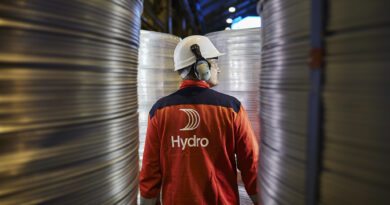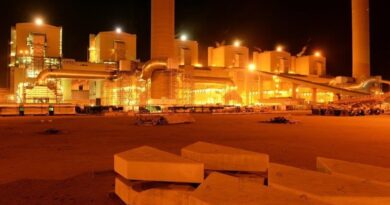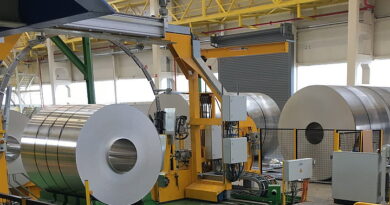AI used to design high performance steels
Over time, steel has gradually improved through a trial and error experimental approach, but it is inefficient, time consuming and costly. It is important to accelerate the development of new materials with excellent properties.
Machine learning technology has contributed to advances in science and technology, from healthcare to high energy physics. Machine learning is now ready to help accelerate the development of stronger alloys, especially stainless steel.
Pacific Northwest National Laboratory postdoctoral fellow Dr Ottoman Mamun is the lead author of two recent related journal articles revealing new strategies for machine learning applications in advanced alloy design.
The article records the results of a joint effort between Pacific Northwest National Laboratory and the National Institute of Energy Technology. The Pacific Northwest National Laboratory National Institute of Energy Technology collaboration focused on two material types.
Austenitic stainless steels are widely used in plants due to their excellent strength and corrosion resistance, but they have a limited service life at high temperatures. Ferrite-martensite steels with a chromium range of 9-12% also offer strength benefits, but can be prone to oxidation and corrosion.
According to Dr Mamun, recent advances in computational modeling and machine learning have become important new tools for achieving better materials faster. This white paper describes the team’s efforts to enhance and analyze stainless steel datasets provided by National Institute of Energy Technology team members with three different algorithms.
The ultimate goal was to build an accurate forecast model about the breaking strength of two types of alloys. The team concluded that an algorithm known as the Gradient Boosted Decision Tree best meets the need to build machine learning models to accurately predict fracture strength.
In addition, researchers argue that integrating the resulting model into existing alloy design strategies can speed up the identification of promising stainless steels with excellent properties for dealing with stress and strain.
The application of machine learning by the Pacific Northwest National Laboratory National Institute of Energy Technology research team is explained in “Machine learning support interpretable model for predicting fracture strength of Fe-based martensite and austenite alloys” published on March 9.
Abstract “The Larson–Miller parameter offers an efficient and fast scheme to estimate the creep rupture life of alloy materials for high-temperature applications; however, poor generalizability and dependence on the constant C often result in sub-optimal performance.
In this work, we show that the direct rupture life parameterization without intermediate LMP parameterization, using a gradient boosting algorithm, can be used to train ML models for very accurate prediction of rupture life in a variety of alloys (Pearson correlation coefficient >0.9 for 9-12% Cr and >0.8 for austenitic stainless steels).
In addition, the Shapley value was used to quantify feature importance, making the model interpretable by identifying the effect of various features on the model performance. Finally, a variational autoencoder-based generative model was built by conditioning on the experimental dataset to sample hypothetical synthetic candidate alloys from the learnt joint distribution not existing in both 9-12% Cr ferritic–martensitic alloys and austenitic stainless steel datasets.”
The project team’s second article, “Machine Learning Extended Prediction and Generative Models for Fracture Life of Ferritic and Austenitic Steels,” was published. Abstract” The class of 9-12% Cr ferritic-martensitic alloys and austenitic stainless steels have received considerable attention due to their numerous applications in high temperature power generation industries.
To design high strength steels with prolonged service life requires a thorough understanding of the long-term properties, e.g., creep rupture strength, rupture life, etc., as a function of the chemical composition and processing parameters that govern the microstructural characteristics.
In this article, the creep rupture strength of both 9-12% Cr FMA and austenitic stainless steel has been parameterized using curated experimental datasets with a gradient boosting machine. The trained model has been cross validated against unseen test data and achieved high predictive performance in terms of correlation coefficient (R2>0.98 for 9-12% Cr FMA and R2>0.95 for austenitic stainless steel) thus bypassing the need for additional comprehensive tensile test campaigns or physical theoretical calculations. Furthermore, the feature importance has been computed using the Shapley value analysis to understand the complex interplay of different features.”
In addition to Dr Mamun, the research team included PNNL’s Arun Sathanur and Ram Devanathan and NETL’s Madison Wenzlick and Jeff Hawk.
This work was funded through the XMAT (Extremophile) Consortium, which includes research contributions from seven DOE National Laboratories, under the US Department of Energy’s Fossil Energy Department.
The consortium aims to accelerate the development of improved heat-resistant alloys for a variety of power plant components and predict the long-term performance of alloys.
Machine learning, a type of artificial intelligence, applies algorithms to datasets to develop faster solutions to scientific problems. This feature makes a big difference in research around the world, and in some cases spends a considerable amount of time on scientific discoveries and technological developments.




